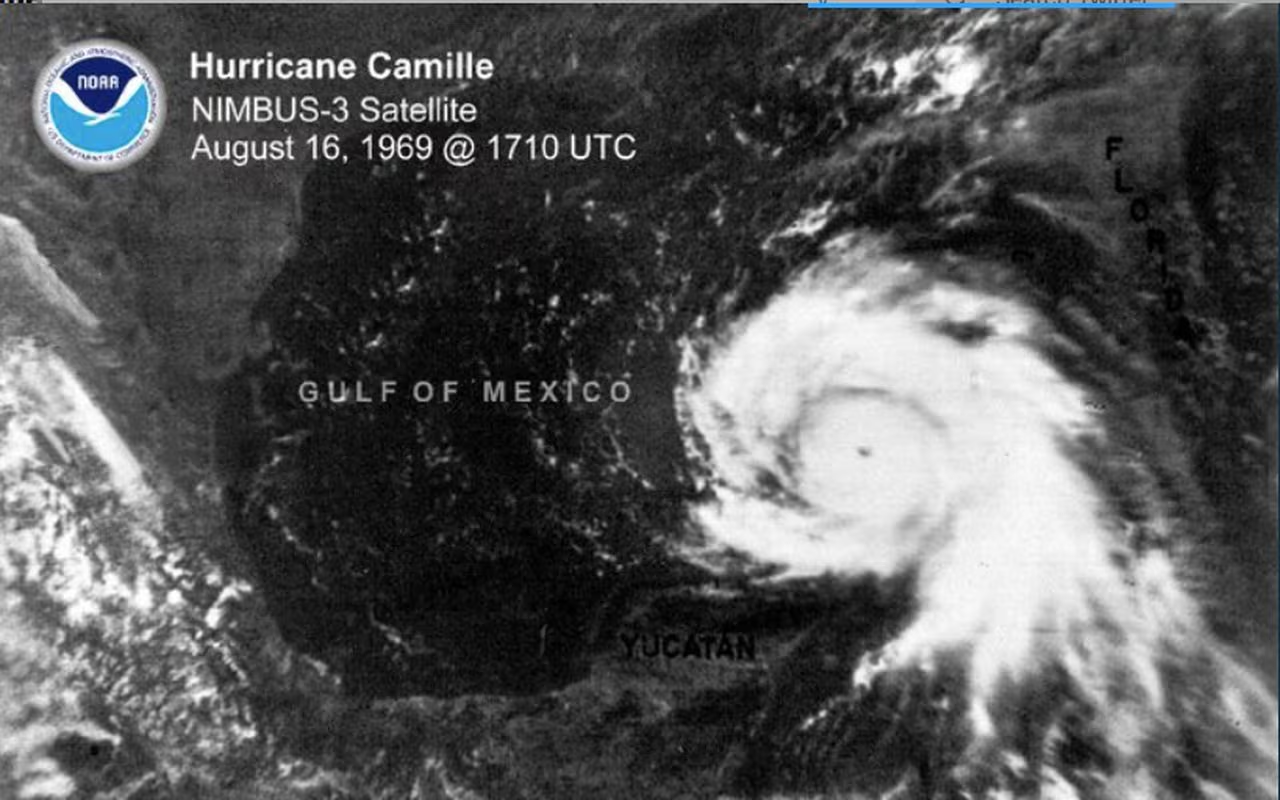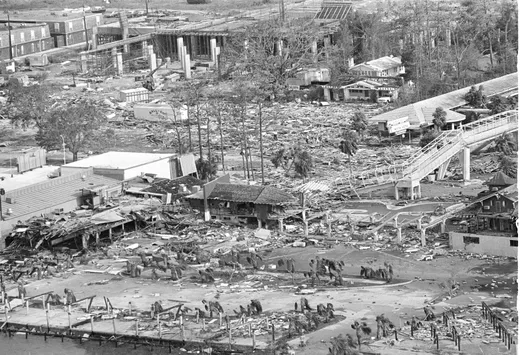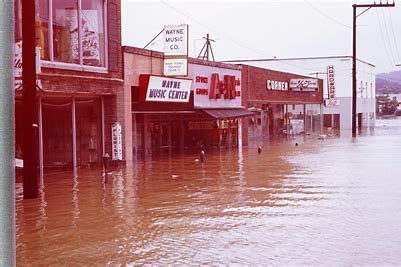Hurricane Camille was one of the most powerful and destructive hurricanes to hit the United States in the 20th century. Forming over the Caribbean on August 14, 1969, Camille intensified rapidly as it moved toward the Gulf of Mexico, reaching Category 5 status with sustained winds of up to 190 mph and a minimum central pressure of 900 millibars. On August 17, it made landfall near Waveland, Mississippi, producing an unprecedented storm surge estimated between 24 and 28 feet. The hurricane severely impacted the physical environment, destroying coastal towns, causing erosion along the beaches, and demolishing buildings and infrastructure with its powerful winds and surges. Inland flooding from torrential rains also led to landslides, particularly in Virginia, where flash floods swept away entire communities.
Dale M.
Bill Harvey, Hattiesburg American. (2019, August 17). 50 years after Hurricane Camille: “This is my story.” Mississippi Clarion Ledger. https://www.hattiesburgamerican.com/story/news/local/2019/08/17/50-years-after-hurricane-camille-this-my-story-biloxi-mississippi/2000099001/
The human impact was equally devastating. Camille claimed around 259 lives, injured thousands, and left tens of thousands homeless. In addition to the direct loss of life, the hurricane resulted in severe economic costs, with damages totaling $1.42 billion (approximately $11 billion in 2023 adjusted for inflation). Many residents in Mississippi’s coastal areas were forced to rebuild from scratch, with some towns taking decades to recover fully. Camille also prompted widespread evacuation reforms and raised awareness about the need for better hurricane preparedness (Hearn, 2004; Sullivan, 2019).
Brumfield, The News Leader. (2017, September 3). Unparalleled destruction of Hurricane Camille in 1969. The News Leader. https://www.newsleader.com/story/news/history/2017/09/03/unparalleled-destruction-hurricane-camille-1969/629783001/
Hurricane Camille underscored the limitations of hurricane forecasting and disaster preparedness at the time, especially in understanding storm surge impacts. Camille’s storm surge, one of the highest on record, highlighted the importance of accurate surge prediction and evacuation protocols. One implication of Camille was the increased investment in meteorological research, which led to the development of more sophisticated storm-tracking technology, early warning systems, and advanced flood modeling. As a result of the devastation, U.S. emergency management policies evolved to focus more on preventative infrastructure, such as seawalls and flood barriers, and community education on evacuation procedures.
To mitigate similar impacts in the future, actions could include stricter building codes in hurricane-prone areas, mandating elevated structures to withstand storm surges, and improved emergency response coordination between federal, state, and local authorities. Community-level disaster education and mandatory evacuation orders could also be reinforced to protect human lives. As Camille demonstrated, understanding the hurricane’s physical parameters is crucial, but ensuring comprehensive disaster planning and public readiness is just as essential (Knabb et al., 2011).
Sources
Hearn, P. (2004). Hurricane Camille: Monster Storm of the Gulf Coast. Louisiana State University Press.
Sullivan, B. (2019). “Remembering Hurricane Camille, 50 Years Later.” Weather Underground. Retrieved from https://www.wunderground.com/cat5camille
Knabb, R. D., Rhome, J. R., & Brown, D. P. (2011). The Deadliest, Costliest, and Most Intense United States Tropical Cyclones from 1851 to 2010 (and Other Frequently Requested Hurricane Facts). NOAA/NWS/National Hurricane Center.
U.S. Geological Survey. (n.d.). “Hurricane Camille 1969 Storm Surge.” Retrieved from https://www.usgs.gov
Gulf Coast News. (2019). “Hurricane Camille 50th Anniversary.” Gulf Coast News. Retrieved from https://www.gulfcoastnews.com



No comments:
Post a Comment
Note: Only a member of this blog may post a comment.